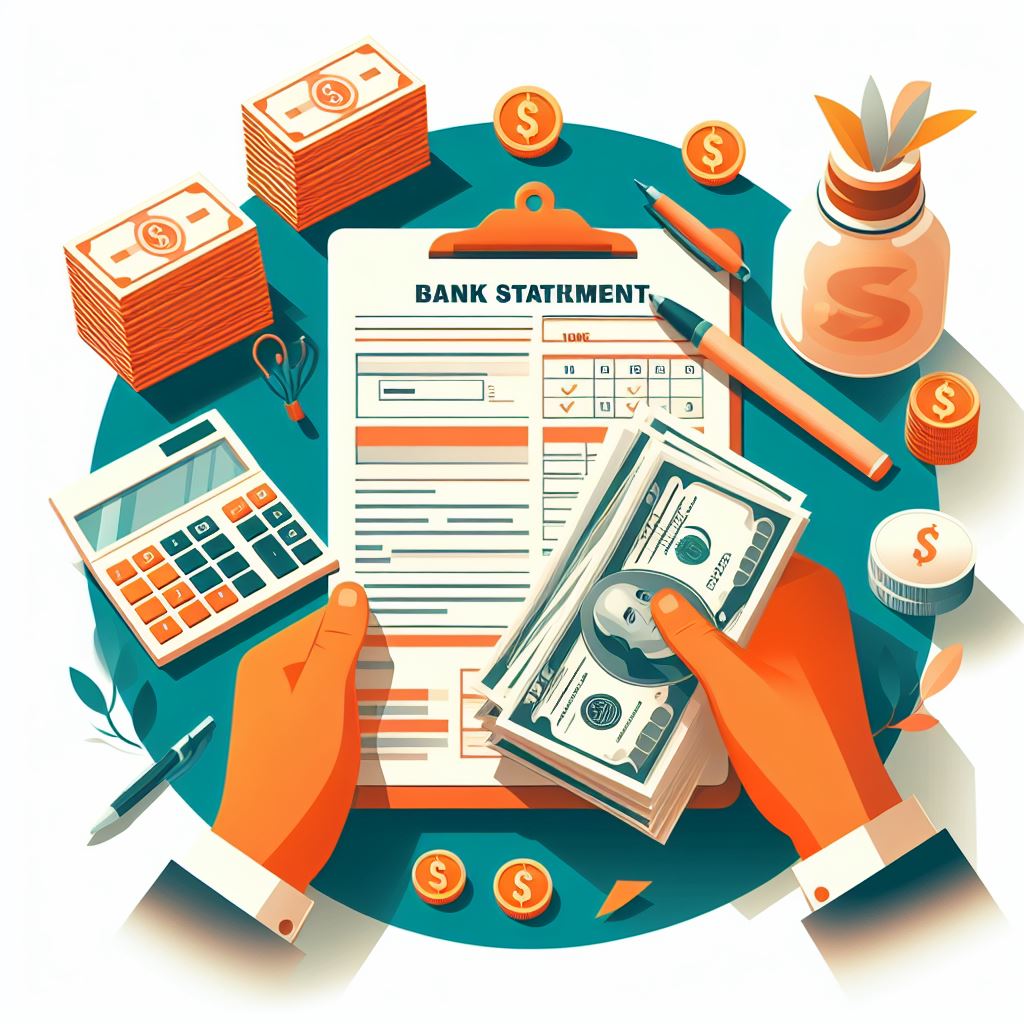Introduction to Bank Statement Templates
Welcome to our blog post on bank statement templates! In today’s digital age, where financial transactions are conducted online more than ever before, the security of banking information is a paramount concern. Bank statements generator contain sensitive and confidential data that must be protected from unauthorized access and potential threats. That’s why integrating robust security measures into bank statement templates is essential for banks and their customers alike.
In this article, we will explore the importance of security measures in bank statements and discuss the common security measures that should be integrated into these templates. We will also delve into additional security features worth considering, as well as the challenges faced in implementing such measures. We’ll provide you with some best practices for ensuring secure bank statement templates.
So let’s dive in and discover how to safeguard your financial information through comprehensive security measures in bank statement templates!
Importance of Security in Bank Statements
When it comes to managing finances, bank statements are an essential tool. They provide a detailed record of transactions, balances, and other crucial information. However, in this digital age where cyber threats are rampant, ensuring security in bank statements has become more important than ever.
The importance of security in bank statements cannot be overstated. These documents contain sensitive financial data that must be protected from unauthorized access or potential fraud. Without proper security measures in place, individuals and businesses could fall victim to identity theft or financial scams.
To safeguard against these risks, banks and financial institutions integrate various security measures into their statement templates. Encryption is one such measure commonly used to protect the transmission of data between parties involved. This ensures that only authorized users can access the information within the document.
Another common security feature is password protection. By requiring a unique password to open or view a bank statement template online or through email attachments, banks add an extra layer of defense against unauthorized access.
In addition to encryption and password protection, some advanced bank statement templates also incorporate two-factor authentication (2FA). This involves verifying the user’s identity using multiple factors such as something they know (password), something they have (smartphone), or something they are (fingerprint).
While these security measures significantly enhance the safety of bank statements, there are challenges associated with implementing them effectively. For instance, striking a balance between robust security and user-friendliness can be tricky for both customers and financial institutions.

Common Security Measures in Bank Statement Templates
When it comes to bank statement templates, security should be a top priority. After all, these documents contain sensitive financial information that must be protected from unauthorized access or tampering. To ensure the confidentiality and integrity of bank statements, various security measures can be integrated into their templates.
One common security measure is password protection. By assigning a unique password to each bank statement template, only authorized individuals with the correct password can access and view the document. This helps prevent unauthorized users from gaining access to confidential information.
Another important security feature is encryption. Encryption transforms data into unreadable code that can only be deciphered with a decryption key. By encrypting bank statement templates, even if they are intercepted during transmission or storage, the information remains secure and inaccessible to anyone without the decryption key.
Digital signatures are also commonly used in bank statement templates for authentication purposes. A digital signature ensures that the document has not been altered since it was signed by using cryptographic algorithms. This provides assurance that the contents of the bank statement have not been tampered with.
In addition to these common security measures, there are other features worth considering for enhanced protection of bank statement templates. One such feature is watermarking, which involves adding visible or invisible markings on the document to deter counterfeiting or unauthorized duplication.
Audit trails are another valuable security component in bank statements templates as they track and record any changes or modifications made to the document over time. This helps detect any suspicious activities and ensures accountability.
Implementing these security measures does come with its challenges though. It requires robust IT infrastructure capable of handling encryption processes efficiently while maintaining system performance and user experience.
Furthermore, ensuring proper education and training for employees who handle sensitive financial data is crucial for preventing internal breaches of security protocols.
Additional Security Features to Consider
When it comes to bank statement templates, ensuring the highest level of security is crucial. In addition to the common security measures mentioned earlier, there are additional features that can further protect sensitive information.
One such feature is two-factor authentication (2FA). This adds an extra layer of security by requiring users to provide not only their password but also a second form of verification, such as a unique code sent via SMS or email. By implementing 2FA, banks can significantly reduce the risk of unauthorized access to bank statements.
Encryption is another important security feature. Encrypting data means converting it into a secret code that can only be deciphered with an encryption key. This ensures that even if someone manages to intercept the data, they won’t be able to read it without the proper key.
Regular software updates and patches are essential for maintaining strong security in bank statement templates. These updates often include fixes for vulnerabilities discovered in previous versions and help keep hackers at bay.
Additionally, banks should consider implementing activity monitoring tools that track user actions within the system. This allows for real-time detection of any suspicious activities and enables quick response and mitigation before any harm occurs.
While common security measures are necessary in bank statement templates, considering additional features such as two-factor authentication, encryption, regular software updates, and activity monitoring can greatly enhance overall security levels. It’s vital for banks to stay proactive and continuously update their systems with robust security measures to safeguard customer information effectively.
Challenges in Implementing Security Measures
Ensuring the security of bank statement templates is crucial in today’s digital age. However, implementing effective security measures can be a complex and challenging task. Here are some of the common challenges that banks face when trying to integrate security into their statement templates.
One of the major challenges is balancing usability with security. While it is important to have robust security features, they should not hinder the user experience or make it difficult for customers to access their statements. Finding the right balance between convenience and protection can be a delicate task.
Another challenge lies in keeping up with evolving threats. Cybercriminals are constantly finding new ways to exploit vulnerabilities and gain unauthorized access to sensitive information. Banks need to stay proactive by regularly updating their security measures and staying abreast of emerging threats.
Additionally, ensuring compatibility across different platforms and devices poses another challenge. With customers accessing bank statements through various devices such as smartphones, tablets, and computers, it becomes essential for banks to ensure that their templates are secure on all platforms without compromising functionality.
Furthermore, maintaining compliance with regulatory standards adds an extra layer of complexity. Banks must adhere to industry-specific regulations like GDPR (General Data Protection Regulation) or PCI-DSS (Payment Card Industry Data Security Standard), which require them to implement specific security measures within their statement templates.
Employee education and awareness play a crucial role in successful implementation of security measures. Ensuring that employees understand best practices for data protection and remain vigilant against potential breaches can be an ongoing challenge for banks.

Best Practices for Secure Bank Statement Templates
Ensuring the security of bank statement templates is vital to protect sensitive financial information. By implementing best practices, banks can mitigate potential risks and keep their customers’ data safe.
1. Use Encryption: Encrypting bank statement templates adds an extra layer of protection. It scrambles the data, making it unreadable to unauthorized individuals. Implementing strong encryption algorithms ensures that even if someone gains access to the template, they won’t be able to decipher its contents.
2. Limit Access: Restricting access to bank statement templates reduces the chances of unauthorized viewing or tampering. Only authorized personnel should have permission to handle these documents, and strict protocols must be in place for granting and revoking access privileges.
3. Regular Audits: Conduct regular audits of your bank’s internal processes and systems related to storing and distributing statement templates. This helps identify any vulnerabilities or weaknesses that could compromise security.
4. Secure Storage: Store electronic copies of bank statement templates in secure servers with robust firewalls and intrusion detection systems. Physical copies should be kept in locked cabinets or rooms accessible only by authorized personnel.
5. Utilize Two-Factor Authentication (2FA): Implement a two-factor authentication system when accessing sensitive banking information such as statements.
This adds an additional layer of security by requiring users to provide something they know (password) along with something they have (a unique code sent via text message or generated by a mobile app).
By following these best practices, banks can enhance the security measures integrated into their bank statement templates and safeguard customer information from potential threats
Conclusion
In conclusion, securing bank statement templates demands a multi-faceted approach. This includes integrating robust security measures while balancing user-friendly design. By employing encryption, regular system updates, vulnerability testing, and user education, banks can fortify their defenses against cyber threats. However, no system is entirely impervious, necessitating constant monitoring and audits. Through these efforts, banks can bolster customer trust and mitigate the risks of financial fraud or identity theft, ensuring the integrity of sensitive financial information.





